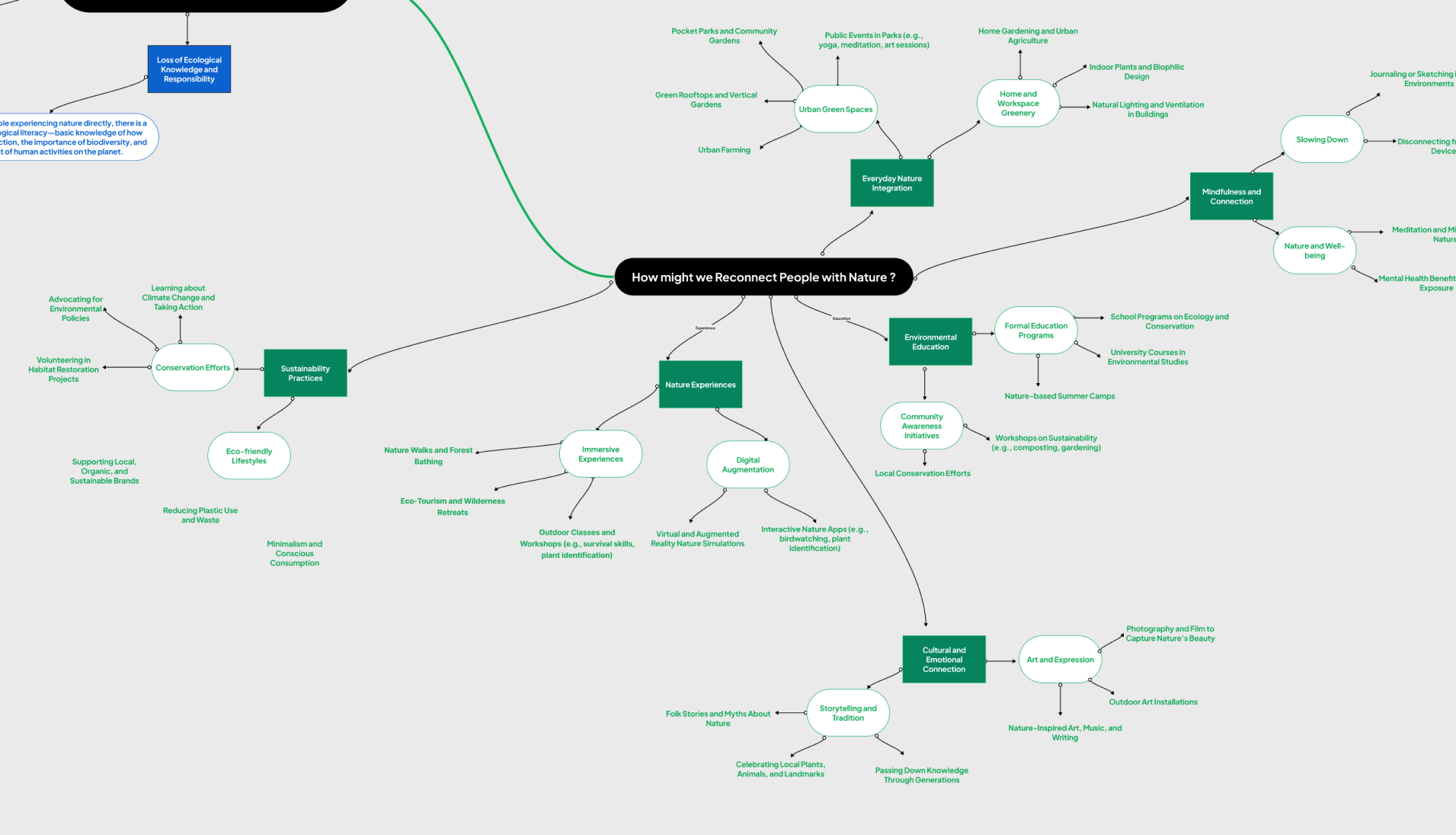Mind mapping
I started mind mapping by focusing on the problem: what are the environmental issues, and what's happening? I identified key issues like air pollution, brownfields, plastic waste in the oceans, climate change, and global warming. These problems impact people’s physical and mental well-being, from heatwaves to deteriorating air quality.
After creating the first diagram, I realized that these issues result from human actions toward the environment. So, my next question was, why is this happening? I found that the root causes are human activities, such as overuse of plastic containers, neglect of environmental issues, land misuse, monoculture farming, deforestation, and lack of environmental knowledge.
As I mapped this out, I felt that all these problems stem from a disconnection from nature. This disconnect leads people to engage in harmful actions without fully understanding their impact.
With this insight, I created a mind map exploring ideas for how we might help people reconnect with nature.
Reflecting on this process, I found that mind mapping is valuable for uncovering root causes and understanding the connections, relationships, and cause-and-effect dynamics within complex issues.
Process
Identifying the Problem: I began by exploring environmental issues like polluted air, plastic waste in the oceans, and climate change, recognizing how they impact people’s physical and mental health.
Understanding Causes: Next, I questioned why these problems exist, pinpointing human activities—such as deforestation, overuse of plastics, and industrial farming—that harm the environment.
Finding a Core Cause: Through my mapping, I realized that many environmental problems stem from a broader issue: humans’ disconnection from nature.
Ideating Solutions: This insight led me to brainstorm ways to help people reconnect with nature, believing that rekindling this bond could encourage sustainable practices and reduce harmful behaviors.
Reflection: Mind mapping has helped me visually unpack the complex relationships between human actions, environmental degradation, and potential solutions. By organizing my thoughts this way, I’ve gained a clearer perspective on root causes and interconnected effects.



